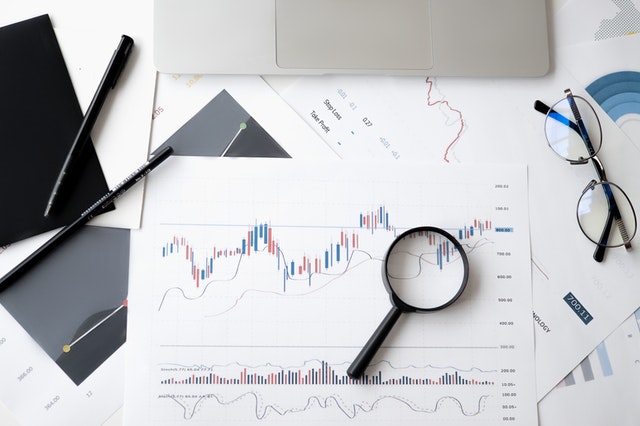The market hits record highs one minute. The next thing you know, we’re experiencing a stock market correction. What stocks should you buy after the stock market crash?
Although the ongoing COVID pandemic continues to be a primary source of current market turmoil, it is not necessary for the stock market to enter into decline in response. It is common for markets to decline due to a variety of reasons. During early 2022, for example, investors were worried about rising inflation and interest rates as well as pandemic-related concerns.
Although the history of crashes, corrections, and bear markets can tell us how long they have lasted, people aren’t entitled to a calendar alert announcing when, how, and how much future dips will happen.
A stock market crash is when the price of a stock falls dramatically.
This bit of context offers a bit of context, though there are no specific numbers indicating crashes. S&P 500 trading may be halted if it drops 7% in one day. In Wall Street’s history, such a bad day has only occurred a few times. As long as the S&P 500 does not change by more than 1%, anything outside these parameters is likely to constitute an active day on the stock market – for good or for bad.
Crashing markets are almost a “natural” part of investing cycles, as history has repeatedly shown. After experiencing its worst one-day drop in months on July 19, Wall Street speculated that a major correction might be up ahead – and that would provide stocks to buy. Further bolstering investor speculation is the spread of Delta variants, which threaten the re-opening of the global economy.
Over the past few days, broader markets have recovered their losses. Volatility, however, has risen. During the past seven decades, the benchmark S&P 500 has dropped by double-digit percentages about three dozen times. There is a possibility that we will see another significant pullback in the market in the near future. Consequently, today I’d like to discuss stocks that you should consider buying after the market crashes.
An economic downturn is a perfect time to buy stocks if you’re a savvy long-term investor. When high-quality companies are bought during a crash, investors will have a great opportunity to build significant wealth and generate lucrative returns. As a result of this, every crash has been followed by a bull market rally.
The following are six stocks you should buy after the market crash, based on all this information.
Long-term investors don’t need to worry about a stock market crash. In fact, it makes for a great shopping occasion. A bull market rally has eventually put every crash and correction in history in the rearview mirror. You have a very good chance of building a large fortune if you buy quality companies when they are on the decline during a crash.
Investors can confidently buy these stocks when the next market crash comes.
Intuitive Surgical
Robotic-assisted surgical systems developer Intuitive Surgical (NASDAQ: ISRG) comes to mind when a stock market crash or steep correction strikes. Due to my involvement in the March 2020 Coronavirus crash, I have firsthand experience in the field.
You’ll likely notice that Intuitive Surgical dominates the healthcare sector once you learn about it. By the end of March, 6,142 da Vinci surgical systems had been installed in hospitals and surgical centers around the globe. The number may not seem impressive, but it’s actually far more installations than its competitors have combined.
Intuitive Surgical often hangs on to its clients for more than a decade because of the high cost of the systems ($0.5 million to $2.5 million) and the hours it takes to train surgeons. In other words, customer churn is practically nonexistent.
There is also the consideration that Intuitive Surgical operates in a highly defensive market. The need for surgical procedures, regardless of economic conditions, is constant since we can’t choose when or how we get sick.
It is Intuitive Surgical’s operating margin, which is built to keep improving over time, that makes it one of the best stocks to own. Da Vinci systems accounted for most of the company’s sales in the 2000s. In today’s market, its most significant revenue is generated by selling instruments and accessories with every procedure, as well as by servicing its systems. Both of these segments produce higher margins. As more systems are installed, earnings growth will continue to exceed sales growth as these higher-margin segments are installed.
Roblox
Roblox, a pioneer in the metaverse, has seen a surge in revenue and new users since the pandemic began. In Q3 2021, there will be 47.3 million daily active users, up from 18.4 million daily active users in Q3 2019. Joining Roblox is free. A currency called Robux is sold in the game. Users can use the currency to purchase premium content and experiences unavailable to free users, such as a virtual hat and shirt.
Roblox earned more than twice as much revenue in its most recent quarter, $509 million. From the $509 million in revenue, Roblox generated $181 million in cash. Investors are excited about Roblox’s increasing users, revenue, and cash flow. Shares have increased by 47 percent in the last month alone.
Direxion NASDAQ-100 Equal Weighted Index Shares ETF (QQQE)
It provides equal-weight exposure to all NASDAQ-100 stocks through the Direxion NASDAQ-100 Equal Weighted Index Shares ETF. Because of this, companies with smaller market capitalizations (cap) could potentially provide investors with higher returns. Quarterly rebalancing is carried out on the fund.
In March 2012, QQQE began trading. The exchange currently has about $380 million in net assets. Information technology represents 38.36 percent, healthcare (15.87%), and consumer discretionary (14.1%). About 52% of net worth is in the top 10 stocks. About 1% of each stock is weighted.
Since the fund was launched a year ago, it has returned over 35% and 13% for the year to date. During the recent trading days, QQQE reached record highs. The dips in the fund were attractive to potential investors.
Alphabet
During the next crash or steep correction, you can buy Alphabet, the parent company of YouTube and Google (NASDAQ: GOOGL) (NASDAQ: GOOG).
Analyzing Google’s dominant search engine and its ancillary businesses can provide an important answer to the question, “Why Alphabet?”.
The global internet search market share of Google, for instance, is estimated at 92.5% for June 2021, and between 91% and 93% for the trailing year. Businesses paying a lot of money for the right to engage with as many targeted eyeballs as possible is no surprise with such search dominance. The internet ad revenue of Google consistently increases by double digits, except during the peak of the ad recession caused by the Coronavirus.
However, Alphabet doesn’t have just one trick up its sleeve. One of the three most-visited social sites on the internet is YouTube, the company’s streaming video platform. Revenue from YouTube ads rose by 49% in the first quarter, reaching $24 billion on an annual basis. YouTube was acquired by Google in 2006 for $1.65 billion, so that’s not too bad.
Also growing like a weed is Google Cloud (the company’s cloud infrastructure department). Canalys estimates that cloud computing accounted for 7% of all cloud infrastructure spending in the first quarter of 2021. Cloud will play a critical role in pushing operating cash flow higher by mid-decade since cloud margins exceed ad margins.
Amazon
Amazon’s shares have fallen 14% since the beginning of the year. Investors may be concerned about the company’s slowing revenue growth, but there’s a good reason for it. Year-ago comparisons have been extremely challenging for the company. When global COVID-19 lockdowns were more prevalent, e-commerce was likely to see some pent-up demand. That’s to be expected.
It may seem expensive to buy this stock due to its 56 price-to-earnings ratio. Consider these factors, however. Since Amazon has already experienced margin expansion over the past few years, earnings are likely to grow rapidly in the coming years. Through economies of scale, the business model of the company proves to be highly leveraged. Amazon’s earnings per share are expected to grow at an average annualized rate of 36% over the next five years. The current share price of Amazon is easy to justify.
Apple
Investors have an excellent opportunity to buy shares of Apple (NASDAQ: AAPL) at a discount, as the stock has declined 8% year to date. The company’s revenue grew 29% year over year during its most recent quarter, despite supply shortages.
Apple CFO Luca Maestri said in the company’s fiscal fourth-quarter earnings release that the September quarter results are a fitting conclusion to a strong fiscal year of double-digit growth, during which new revenue records were set in all of the company’s geographic segments and product categories.
All of this is on top of the $24 billion return the company made to its shareholders during the three-month period. The company distributed about $4 billion as dividends during this period. Twenty billion dollars went toward repurchasing shares.
Take a look at Apple’s cash flow statement if you’re having a hard time justifying Apple’s market capitalization of $2.7 trillion. According to Apple’s fiscal 2021 results, free cash flow amounted to about $93 billion.
There is a good chance Apple’s growth will slow from its present blistering pace. However, its conservative valuation in today’s markets already seems to include this deceleration.
Both Amazon and Apple will provide investors with updates on their recent financial performance soon. On Thursday, January 27, Apple will release its fiscal 2022 results. On Thursday, February 3, Amazon will report its fourth-quarter results.

